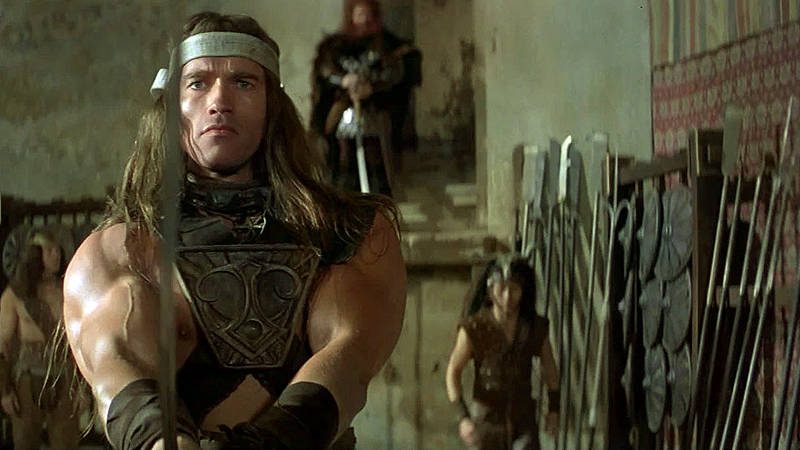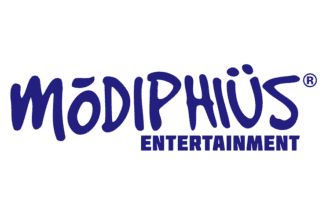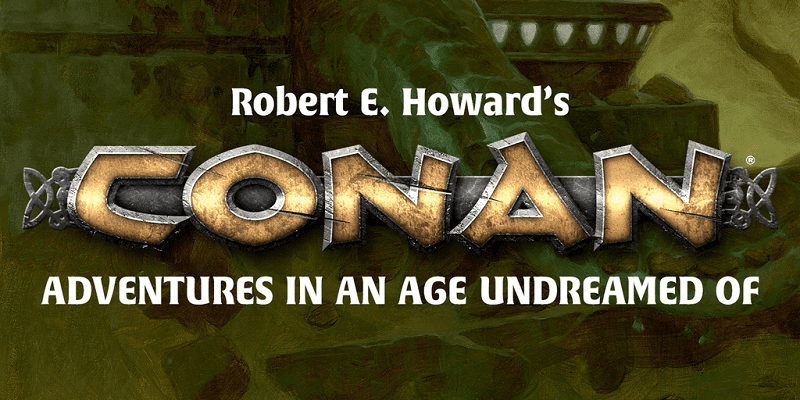
Robert E. Howard’s Conan: Adventures In An Age Undreamed Of… that’s a really long title, and you may be more familiar with Mōdiphiüs’s Conan 2d20 RPG.
I have been a fan of Conan since a very early age starting with my exposure to the Marvel Conan Savage Tales magazines. So It seemed like a good fit for me to be the target market for the game. I like role playing games, and I like Conan the Barbarian. I also have the recently released Conan board game by Monolith through Kickstarter.
Robert E. Howard’s Conan: Adventures in an Age Undreamed Of takes you into the world of Conan the Barbarian, where heroes raise blood-spattered swords against dire sorcery, exotic lands beckon to the daring, danger and treasure lurks in forgotten ruins, and where loathsome creatures haunt the spaces beneath the earth… as well as in the throne-rooms of mighty kingdoms!
Seek your fortune in forbidden tombs or upon blood-soaked battlefields. Cast dark and terrible spells of unimaginable power, at the price of your soul. Sail upon untamed seas to lands where no human in living memory has walked. Fight for the fate of civilization — or barbarism — on a savage frontier!
- Create your own legend in this decadent and violent world. Complete 2d20 game system, including combat, skills, talents, sorcery, and equipment suitable for adventuring in the age before history.
- An extensive gazetteer covering the whole of Conan’s world: featuring fair Aquilonia, gloomy Cimmeria, magic-haunted Stygia, all the way to the far-off steaming jungles of Khitai.
- Extensive guidelines for running scenarios and campaigns in the Hyborian Age, allowing gamemasters to create suitably Howardian adventures
- Fearsome foes, ranging from bandits to sorcerers, apes to giant serpents, Children of Set to frost giants, forest devils, and characters of renown such as Conan or his most deadly foe, Thoth-Amon.
- Art a team of iconic Conan artists, including Tim Truman, Simon Bisley, Esteban Sanjulian, Maroto, Mark Schultz, Tomás Giorello, and more.
- Developed in close consultation with award-winning Conan scholars, this is the most authentic depiction of Conan and his world ever published for games.
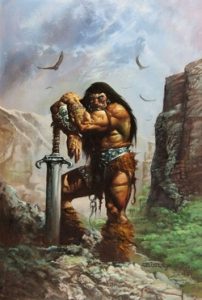 My initial reaction to the 2d20 system was inquisitive (it is also used in Mutant Chronicles, Infinity, and John Carter Warlord of Mars RPGs). I hadn’t played 2d20, and I wanted to learn more, and Mōdiphiüs helps that by giving us a free quick start guide that is available for download for free. You can get a copy here: Conan Quickstart on DriveThruRPG. Now, to be fair. The 2d20 system mechanics are robust and I feel it isn’t really targeted toward a new player. It is geared more for an experienced group of players that has seen a lot of other systems under their belts. They are ready for something different and really like Conan (like everyone should). A new player can catch up, but will need some coaching and help.
My initial reaction to the 2d20 system was inquisitive (it is also used in Mutant Chronicles, Infinity, and John Carter Warlord of Mars RPGs). I hadn’t played 2d20, and I wanted to learn more, and Mōdiphiüs helps that by giving us a free quick start guide that is available for download for free. You can get a copy here: Conan Quickstart on DriveThruRPG. Now, to be fair. The 2d20 system mechanics are robust and I feel it isn’t really targeted toward a new player. It is geared more for an experienced group of players that has seen a lot of other systems under their belts. They are ready for something different and really like Conan (like everyone should). A new player can catch up, but will need some coaching and help.
There is some good crunch and different mechanics going on that will give you a lot of detailed combat encounters. That can be great if you want to roll some dice and keep detailed accounts during a scenario. There are some beautifully destinations and descriptions of Conan’s world.
The 2d20 System Mechanics
So I talked about the crunch. Here is a blurb provided by Mōdiphiüs about 2d20:
“The 2d20 system is a dynamic, narrative system, designed to produce varied and interesting results from dramatic and action-packed situations. Characters roll two d20s, attempting to roll as low as possible on each one – the more dice that roll low, the more successes the character scores.
Tasks will require one or more successes to be successful, and any successes scored beyond that minimum become Momentum, which can be spent to achieve a variety of advantageous effects. However, this can come at a cost: characters who wish to succeed can push their luck, rolling extra d20s to boost their chances of success and the Momentum they generate. However, each extra d20 comes from the character’s resources – such as stocks of arrows – or adds to a pool of Doom that represents all the things that can go wrong in an adventure, which the GM can spend to complicate adventures and scenarios and make the characters’ lives interesting.”
Okay roll two 20 sided dice (sometimes more). Try to get below the target number. Got it. Get below and you count a success. The player is looking for success, and there are additional mechanics like expertise & focus that can increase chance of success & the number of successes on the result of a single roll. More success are always good, right?
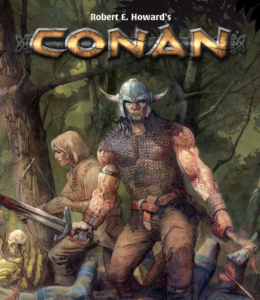 “For example, the Argossian sailor Zachirios is making a Craft test. His Intelligence is 8, he has an Expertise of 3, and a Focus of 2. The Target Number is 11 (8 + 3). Zachirios’ player rolls 2d20 and gets results of 13 and 1. The result of 13 generates no successes, but the result of 1 generates two successes: one for being equal to or lower than the target number (TN) and a second for being equal to or lower than the Focus in the skill.”
“For example, the Argossian sailor Zachirios is making a Craft test. His Intelligence is 8, he has an Expertise of 3, and a Focus of 2. The Target Number is 11 (8 + 3). Zachirios’ player rolls 2d20 and gets results of 13 and 1. The result of 13 generates no successes, but the result of 1 generates two successes: one for being equal to or lower than the target number (TN) and a second for being equal to or lower than the Focus in the skill.”
So the Focus was 2… rolling a 1 or 2 is Great! Kind of like a critical hit. Also in that example, if only 1 success is needed. Then the player creates momentum because they exceeded the require # of successes. Momentum can be used or saved for use later by the player (up to a quantity of 6).
There are also mechanics that will help a game master implement problems against the players. This can be a way to make the situation more gritty and thematic. If the GM can’t think of something they want to use right away as a complication, they can save it into the DOOM pool. Just like the players can save advantages in their Momentum pool.
The combat system for an experienced player of other d20 RPGs is going to be rather intuitive. It is turned based and each player takes actions, standard, minor, free, retaliate reactions, and movement. I don’t think it would be a problem for anyone to quickly catch on and be able to be an expert after a few sessions. I found the combat system clean and the use of combat dice unique. Combat dice are all d6. A result of 3 & 4 is neglected, while a 1 gives a 1 and a 2 gives a 2 result. A 5 & 6 each give a result of 1 with an effect. Example:
“Demetrius of Ophir successfully strikes a Zamorian bandit with his broadsword. The weapon has a damage rating of 5 combat dice. Demetrius’ player rolls with d6s and generates results of 1, 2, 4, 6, and 3. The 1 and the 2 add together for a total of 3. The 4 and 3 are ignored, and the 6 adds 1 to the total and indicates an Effect. Adding this all together, Demetrius’ attack inflicts 4 damage and creates an Effect.“
Sorcery
Diving further into the game, it does have magic. There are magic items and keeping with the Conan theme, there is a system of sorcery. It isn’t the clean and bright magic system that you may be used to like in several high fantasy games that you have experienced. The Conan RPG’s magic system is dangerous for others as well as the ones that wield it. It is corruption system for the users and leads them to be indebted to gods, demons and monsters. All of the magic system follows the same 2d20 rules with rolls, with successes but with a cost to use. With the core book you get a varied listing of 13 spells, not too many but they look really cool with a lot of individuality to them.
I am really over simplifying this system. It has a lot of depth in western, eastern magics, patrons, talismans, enchantments and much more. The Book of Skelos expands upon the magic system that the core book sets a nice solid systemic foundation.
Playing at the table
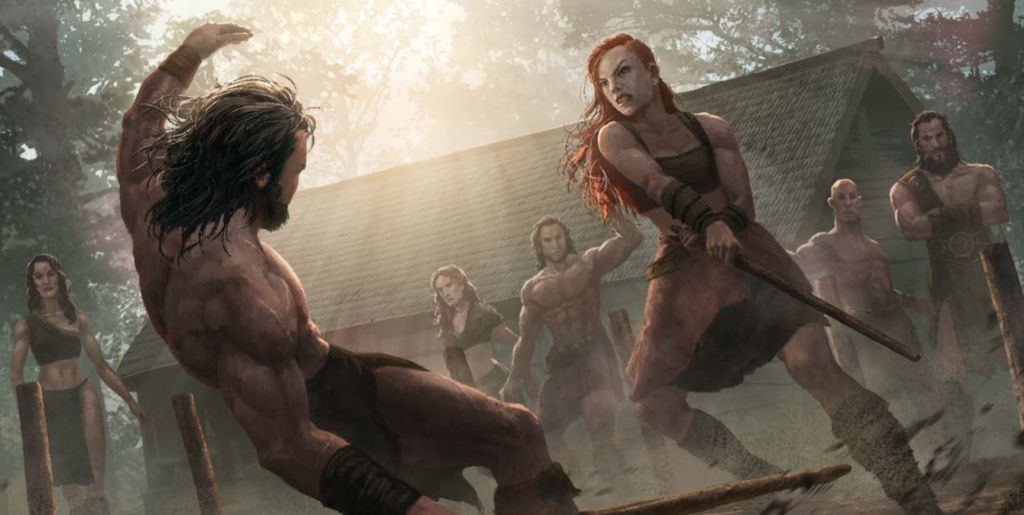 The typical scenario has the group of players either successful or unsuccessful. They can stick together or break up until the next game happens. They can then do some carousing around. And by the time they meet back up, they are ready for their next expedition. The game master can award them some experience points, and they can use that to improve their characters. Those points go toward Attribute improvement, skill improvement, and talent acquisition. Also Renown is awarded that can lead to a character climbing their particular ladder of success. Nothing is very surprising as these are tried-and-true game mechanics used in most role playing games.
The typical scenario has the group of players either successful or unsuccessful. They can stick together or break up until the next game happens. They can then do some carousing around. And by the time they meet back up, they are ready for their next expedition. The game master can award them some experience points, and they can use that to improve their characters. Those points go toward Attribute improvement, skill improvement, and talent acquisition. Also Renown is awarded that can lead to a character climbing their particular ladder of success. Nothing is very surprising as these are tried-and-true game mechanics used in most role playing games.
But the Hyborian world of Conan is the playground for your games. It is bloody and full of death. I find it goes back to the heart of many ideas behind original RPGs. Sword & Sorcery. You can be a Pirate. Outlaw. Mercenary. Sorcerer. Blood thirsty barbarian! But players need to be on their toes. This world is a death magnet that is full of death traps, giant primordial beasts, and fell sorcery from unimaginable worlds at the fingertip of the game master.
It doesn’t take long to get player’s ready with a character and you can start playing right away with a prepared game master. I don’t think there’s a need to use pre-generated characters unless it is going to be a one-shot game. But there are some that could be used in the later portion of the book with the Heroes of the Age.
Conclusion
The core book comes in at 433 pages of Conan charged axe wielding brutality. I found it a great read with a lot of things that kept true to the Conan theme that I really love. There weren’t any flaws that I noted as the editing is spot on (much better than my articles), with beautiful graphics. In this quick review, I pointed out key ideas from the 2d20 system and kept this brief. Including things that I thought you might want to read about the core rulebook, but you should really take a gander for yourself. It isn’t very expensive and if you like Conan like me, I think you will like it too.
I am happy to have this pdf in my collection, and I look forward to many days of savage Conan screams at the table. Go get it!
Peace.
A complimentary review copy was sent to Tribality by Mōdiphiüs.

